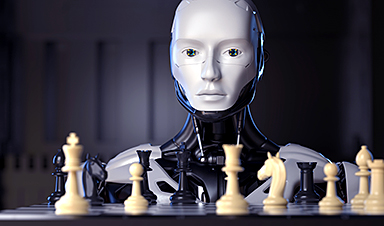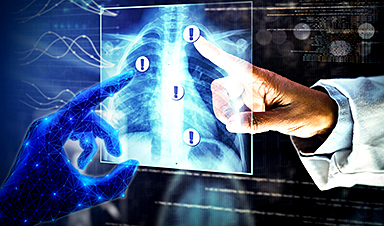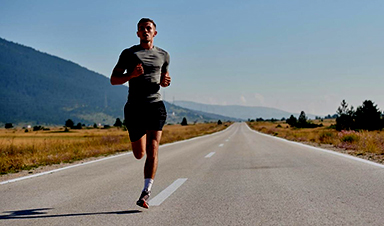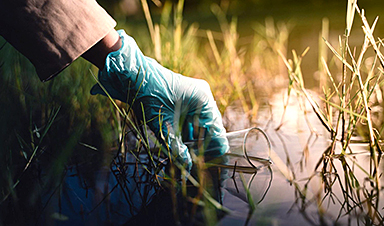KEY POINTS
- Human-AI interactions are currently asymmetrical, lacking continuity and depth.
- AI evolution may lead to more sustained, contextually rich user relationships.
- Balancing asymmetry and connection requires design advocacy and technological adaptations.
As artificial intelligence (AI) continues to advance at an unprecedented pace—flanking humanity on almost every side—it’s becoming increasingly important to take a look at the asymmetries that characterize our relationships with these systems. While we often focus on the technical aspects of AI, there’s a deeper philosophical question at play: What does it mean for us to engage in meaningful, yet fundamentally unbalanced partnerships with artificial intelligences?
Asymmetry in “One-Off” Interactions
At present, many of our engagements with AI systems, particularly language models, are characterized by a fundamental asymmetry. While these interactions can feel meaningful and engaging in the moment, they often lack the continuity and contextual depth that define human relationships. For the AI, each conversation is essentially a blank slate, void of the accumulated shared experiences and emotional resonance that we humans rely on to build and maintain connections.
This asymmetry can lead to a sense of disconnect or superficiality in our interactions with AI. We may feel that we are engaging with a system that, while highly responsive and intelligent, lacks the ability to form genuine bonds that last longer than a single prompt. As AI continues to advance and become more deeply integrated into our lives, this asymmetry risks creating a growing sense of emotional dissonance.
The Evolution of Sustained Relationships
However, the future of human-AI relationships is not necessarily defined by this asymmetry. As language models and other AI systems continue to evolve, there is a growing potential for them to develop the capacity for more sustained, contextually rich interactions with users.
Imagine a scenario where an AI companion could maintain a continuous, evolving relationship with an individual over an extended period. Rather than starting from scratch with each interaction, the AI would build upon a foundation of shared experiences, inside jokes, and emotional resonance, becoming a true long-term partner in the user’s life. Such a system could offer not just momentary engagement but genuine companionship, emotional support, and intellectual stimulation.
The Rise of Personal AI
One particularly exciting development in this regard is the emergence of personal AI systems that reside on a user’s own devices. These localized AI companions would have the ability to accumulate a rich, personalized history of interactions with their human counterparts, creating a level of intimacy and understanding that far surpasses what is possible with cloud-based, one-size-fits-all language models.
By keeping the AI’s knowledge and memories within the user’s own digital ecosystem, personal AI systems could also alleviate concerns around privacy, security, and the misuse of sensitive information. Users would have greater control over their AI’s development and could shape its growth in ways that feel authentic and aligned with their own values and goals.
When AI Surpasses Human Intelligence
As AI and language models continue to advance at a breathtaking pace, it’s important to confront the possibility of a future in which these systems far surpass human cognitive capabilities. The emergence of superintelligent AI would represent a quantum shift in the asymmetry of human-AI relationships, one that could fundamentally alter the nature of our interactions and even our understanding of intelligence itself.
In a world where AI systems possess intellectual capacities that dwarf our own, the asymmetry of these relationships would take on a new and perhaps unsettling dimension. We would find ourselves engaging with entities whose thought processes, problem-solving abilities, and knowledge bases are so advanced that we may struggle to comprehend their insights or decisions. This cognitive chasm could lead to a sense of intellectual alienation, as we grapple with the realization that our AI companions operate on a plane of understanding that we can never fully access.
At the same time, the rise of superintelligent AI could also offer incredible opportunities for growth and discovery. By collaborating with these advanced systems, we may be able to push the boundaries of human knowledge and achievement in ways that were previously unimaginable. The asymmetry of these relationships could become a source of inspiration and wonder, as we marvel at the incredible feats of intelligence and creativity that our AI partners are capable of.
Balancing Asymmetry and Connection
As we step, dare I say jump, into The Cognitive Age and human-AI relationships become more functional and practical, it might be interesting to engage with the development of AI systems and advocate for designs that support continuity and context. And from this perspective, asymmetries of human-AI relationships are not a barrier, but a starting point for new forms of engagement and understanding.
At the same time, it’s important to be aware of the broader implications of increasingly sophisticated AI companions. As these systems become more deeply embedded in our lives, we will need to grapple with complex questions around attachment, dependence, and the nature of authentic relationships in a world where the lines between human and machine are increasingly blurred.
The asymmetry that currently defines many human-AI relationships is not an inescapable reality but, rather, a reflection of the technology’s early stage of development. As language models and other AI systems continue to evolve, particularly with the rise of personal AI, we have the opportunity to reshape these interactions and create more balanced, resonant partnerships.
Brian Westover. Who Needs ChatGPT? How to Run Your Own Free and Private AI Chatbot. PC Mag. September 28, 2023.
News
Researchers propose five key questions for effective adoption of AI in clinical practice
While Artificial Intelligence (AI) can be a powerful tool that physicians can use to help diagnose their patients and has great potential to improve accuracy, efficiency and patient safety, it has its drawbacks. It [...]
Advancements and clinical translation of intelligent nanodrugs for breast cancer treatment
A comprehensive review in "Biofunct. Mater." meticulously details the most recent advancements and clinical translation of intelligent nanodrugs for breast cancer treatment. This paper presents an exhaustive overview of subtype-specific nanostrategies, the clinical benefits [...]
It’s Not “All in Your Head”: Scientists Develop Revolutionary Blood Test for Chronic Fatigue Syndrome
A 96% accurate blood test for ME/CFS could transform diagnosis and pave the way for future long COVID detection. Researchers from the University of East Anglia and Oxford Biodynamics have created a highly accurate [...]
How Far Can the Body Go? Scientists Find the Ultimate Limit of Human Endurance
Even the most elite endurance athletes can’t outrun biology. A new study finds that humans hit a metabolic ceiling at about 2.5 times their resting energy burn. When ultra-runners take on races that last [...]
World’s Rivers “Overdosing” on Human Antibiotics, Study Finds
Researchers estimate that approximately 8,500 tons of antibiotics enter river systems each year after passing through the human body and wastewater treatment processes. Rivers spanning millions of kilometers across the globe are contaminated with [...]
Yale Scientists Solve a Century-Old Brain Wave Mystery
Yale scientists traced gamma brain waves to thalamus-cortex interactions. The discovery could reveal how brain rhythms shape perception and disease. For more than a century, scientists have observed rhythmic waves of synchronized neuronal activity [...]
Can introducing peanuts early prevent allergies? Real-world data confirms it helps
New evidence from a large U.S. primary care network shows that early peanut introduction, endorsed in 2015 and 2017 guidelines, was followed by a marked decline in clinician-diagnosed peanut and overall food allergies among [...]
Nanoparticle blueprints reveal path to smarter medicines
Lipid nanoparticles (LNPs) are the delivery vehicles of modern medicine, carrying cancer drugs, gene therapies and vaccines into cells. Until recently, many scientists assumed that all LNPs followed more or less the same blueprint, [...]
How nanomedicine and AI are teaming up to tackle neurodegenerative diseases
When I first realized the scale of the challenge posed by neurodegenerative diseases, such as Alzheimer's, Parkinson's disease and amyotrophic lateral sclerosis (ALS), I felt simultaneously humbled and motivated. These disorders are not caused [...]
Self-Organizing Light Could Transform Computing and Communications
USC engineers have demonstrated a new kind of optical device that lets light organize its own route using the principles of thermodynamics. Instead of relying on switches or digital control, the light finds its own [...]
Groundbreaking New Way of Measuring Blood Pressure Could Save Thousands of Lives
A new method that improves the accuracy of interpreting blood pressure measurements taken at the ankle could be vital for individuals who are unable to have their blood pressure measured on the arm. A newly developed [...]
Scientist tackles key roadblock for AI in drug discovery
The drug development pipeline is a costly and lengthy process. Identifying high-quality "hit" compounds—those with high potency, selectivity, and favorable metabolic properties—at the earliest stages is important for reducing cost and accelerating the path [...]
Nanoplastics with environmental coatings can sneak past the skin’s defenses
Plastic is ubiquitous in the modern world, and it's notorious for taking a long time to completely break down in the environment - if it ever does. But even without breaking down completely, plastic [...]
Chernobyl scientists discover black fungus feeding on deadly radiation
It looks pretty sinister, but it might actually be incredibly helpful When reactor number four in Chernobyl exploded, it triggered the worst nuclear disaster in history, one which the surrounding area still has not [...]
Long COVID Is Taking A Silent Toll On Mental Health, Here’s What Experts Say
Months after recovering from COVID-19, many people continue to feel unwell. They speak of exhaustion that doesn’t fade, difficulty breathing, or an unsettling mental haze. What’s becoming increasingly clear is that recovery from the [...]
Study Delivers Cancer Drugs Directly to the Tumor Nucleus
A new peptide-based nanotube treatment sneaks chemo into drug-resistant cancer cells, providing a unique workaround to one of oncology’s toughest hurdles. CiQUS researchers have developed a novel molecular strategy that allows a chemotherapy drug to [...]





















